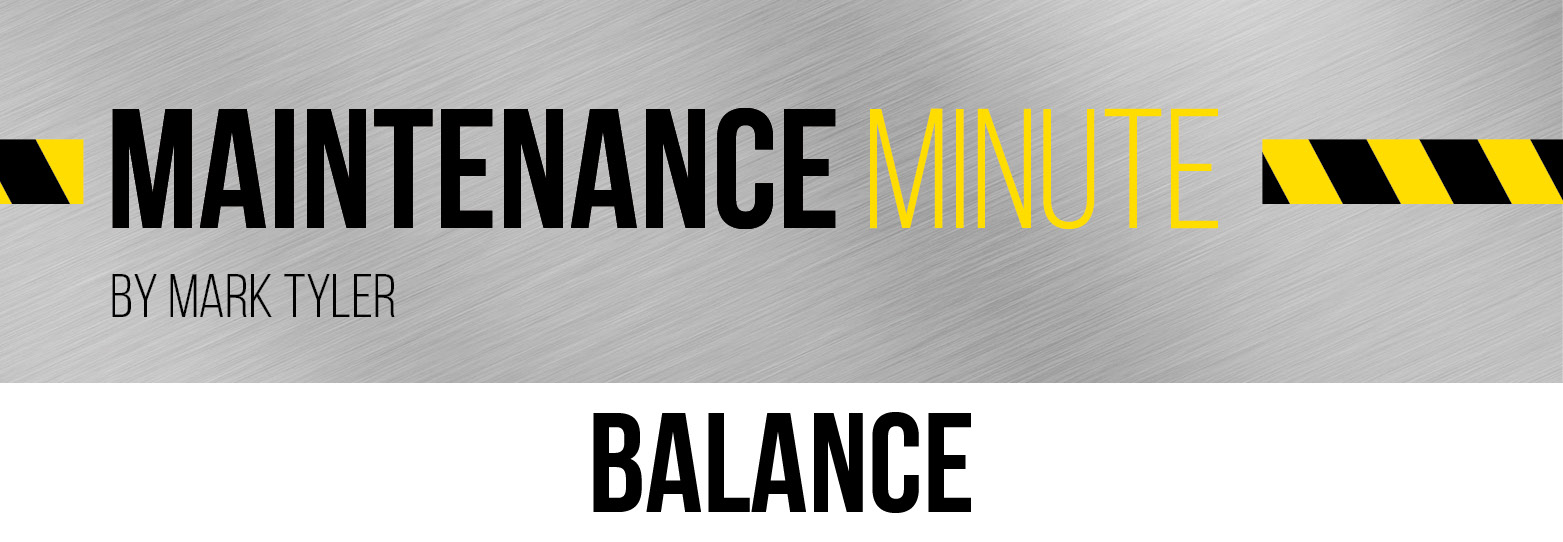|
Feb
21
2022
|
|
Posted 3 years 296 days ago ago by Admin
|
|

Balance is critical. It doesn’t matter if it’s the helicopters we fly and maintain, a person on a tightrope or just managing our everyday life. Maintaining balance is required if we are to continue to progress and minimize our limiting factors. We can take anything to the excess and quickly get out of balance. That’s why it is a good idea to have an accountability partner to help you see things that you may miss seeing yourself. The saying “you can’t see the forest for the trees” is accurate and sometimes briefly stepping away will clear one’s focus.
The machines we fly and maintain are no different than our own bodies. When that helicopter comes to life, it has thousands of moving parts and pieces that must perform together in harmony with the purest of synchrony and balance. As the machine begins to breathe, gears begin to mesh, oil and hydraulic pumps begin to turn, drive shafts rotate, and rotor hubs spin the main and tail rotors. And let’s not forget the engines with hundreds of high-speed rotating components themselves. As the components rotate, they create a vibration. This frequency is measured in Hz, and the magnitude in inches per second. When compared to the established OEM parameters we then have a predictive analytical tool that can predict or eliminate failure and maintain balance. Historically, we are required to perform a rotor track and balance at specified intervals to maintain optimum balance and make corrections as needed. A rotating component that is out of balance can and will create low- or high-frequency vibrations that will unnecessarily cause the aircraft to be out of service and shorten the life of components.
I am encouraged to see the efficiency and accuracy of the latest HUMS devices. These units deliver real-time data on airframe and engine condition. They give the mechanic an additional tool to keep the aircraft in top condition and give the pilot greater peace of mind.
Ken Speaks, president and CEO of RMCI says, “that the new HUMS devices can diagnose problems with an astounding rate of success. They have identified some emerging failures up to 100 hours before receiving a chip light.”
As mechanics, we must keep ourselves in balance as well. Eating a healthy diet and exercising can be difficult to fit into our day and sometimes we just simply must step back, rest, and reassess our situation. Also, utilizing the essential tool of personal and professional development (in last year’s March/April column) will enhance balance in our life.
We use numbers to measure the health of our aircraft. We use numbers to measure our health and we use numbers to measure our progress or as a score against our goals. Jon Gordon said it best: “Numbers don’t motivate people. Motivated people produce numbers. Then the numbers measure the progress.”
As we begin 2022, remember: to do your best, you must be your best. Motivate, operate, and keep the faith—then we will see progress as we balance the weight.
About the author: Mark dedicated the majority of his career serving the helicopter EMS community from Base Mechanic to Director of Maintenance. As Vice President & General Manager of Precision Aircraft Services, Mark now serves helicopter operators from many sectors to include Air Ambulance, Law Enforcement, Private Owners, etc. When not at work, Mark can be found spending time with his family or sitting in a tree stand.